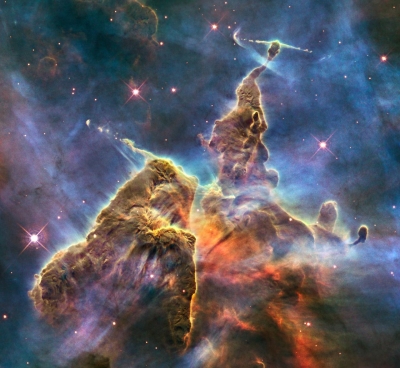
À nebula (plural nebulae) is a giant cloud of dust and gas in space. Most nebulae are formed from the gas and dust thrown out by the explosion of a dying star, while some are formed from the gas that is already in the interstellar medium (the matter and radiation that exist in the space between the star systems in a galaxy).
Where are the nebulae?
Nebulae exist in interstellar space. Astronomers use very powerful telescopes to take pictures of faraway nebulae. Many of NASA’s space telescopes such as the Spitzer Space Telescope and Hubble Space Telescope have captured many images of faraway nebulae. The closest known nebula to Earth is called the Helix Nebula, the remnant of a dying star, possibly one like the Sun. The Helix Nebula is approximately 700 light years from Earth. This means it will take 700 years to reach this nebula if one travels at the speed of light.
Star nurseries
Some nebulae are regions where new stars are beginning to form. This is why they are called ‘star nurseries’. A nebula is made of dust and gases, mostly hydrogen and helium. These dust and gases are very spread out. However, gravity can slowly pull together clumps of these dust and gas. As each clump gets bigger in size, its gravity gets stronger. Eventually, the clump gets so big that it collapses from its own gravity. This collapse causes the material at the centre of the cloud to heat up. It is this hot core that is the beginning of a star.
Picture Credit : Google




